13 Biophilic Bedroom Designs to Dream About
You’ll sleep like a log in these biophilic-inspired bedrooms


It’s always important to get a good night’s sleep, but if your bedroom feels a bit more dull than restful, it’s time to consider a biophilic bedroom makeover. The biophilic design trend has taken off during the past year, thanks in part to our obsession with houseplants, but it isn’t just about hanging a pothos plant near your bed.
Biophilic design is rooted in the concept of invoking nature throughout your interior space. Try out this trend in your bedroom using restful lighting, natural fabrics, and, yes, plenty of plants.
1. Add Playful Elements
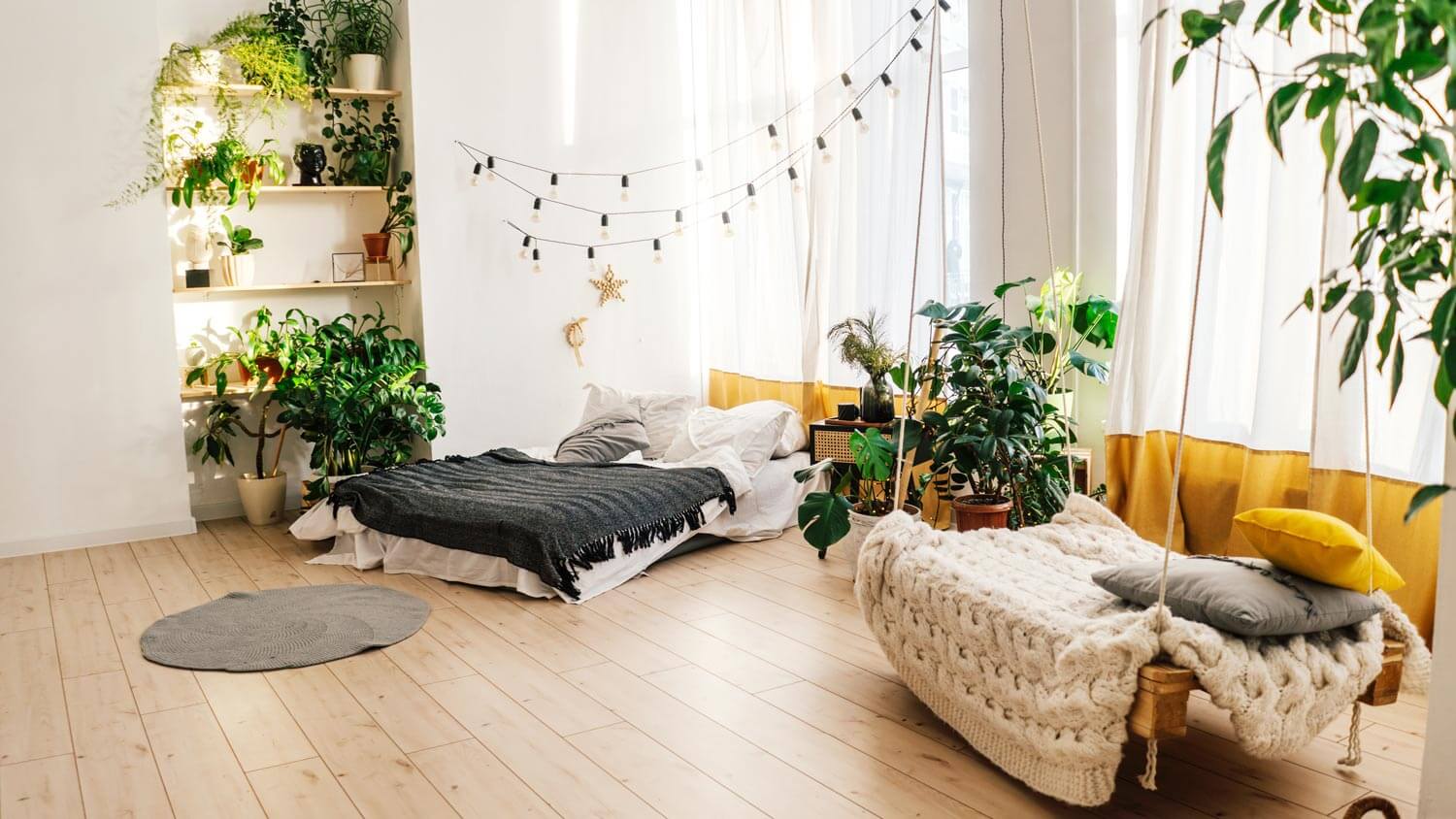
Have some fun with your bedroom design by adding fun and natural elements to your decor. A swing made of wood and rope fiber adds a playful element to a restful space and allows you to sway as if you’re in a hammock on a beach. Add plenty of plants around your swing or egg chair to complete the look.
2. Display DIY Decor
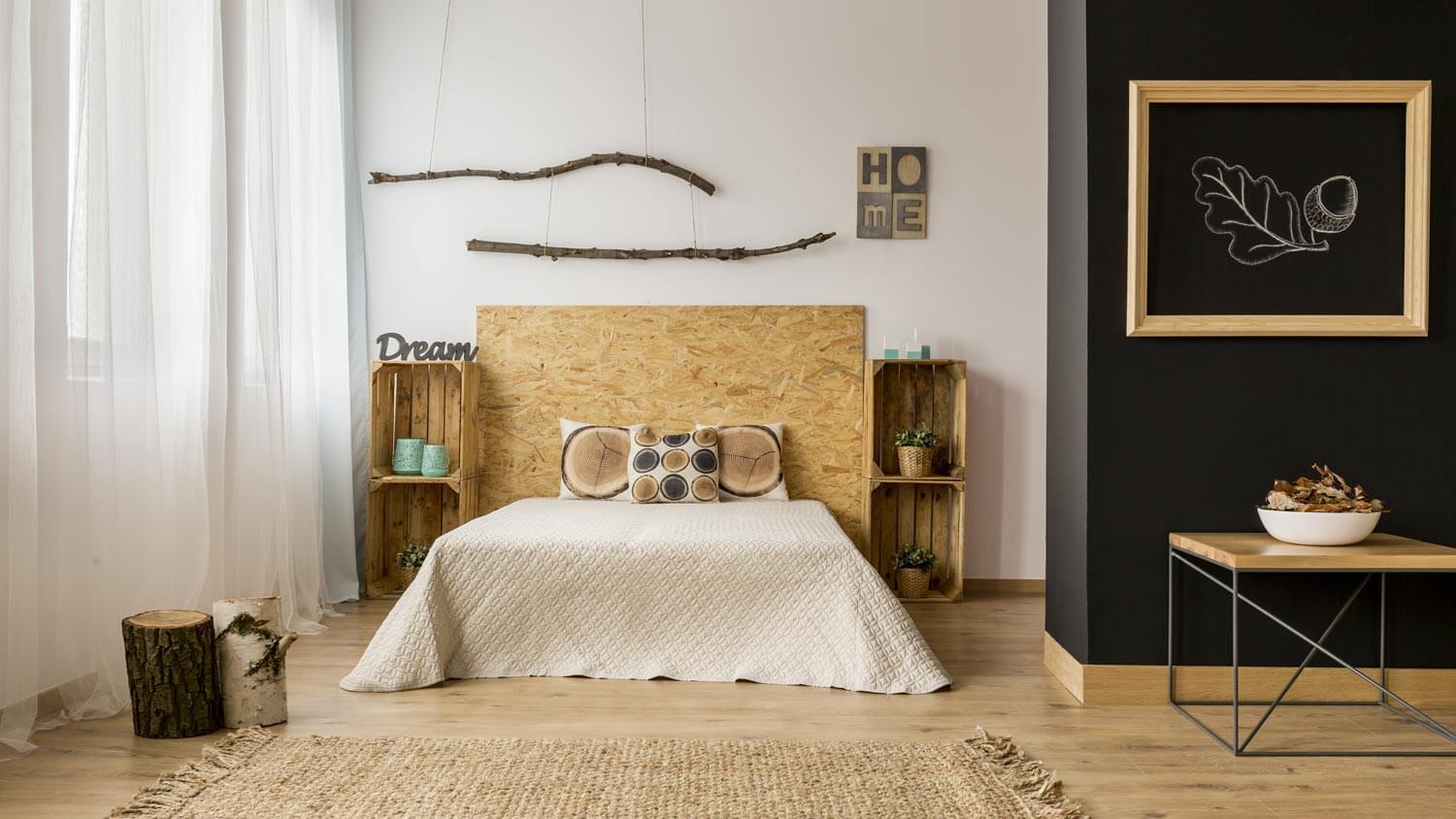
Biophilic decor isn’t limited to houseplants—it encompasses any material or object found in nature. On your next nature hike, collect unique, beautiful branches and incorporate them into your room decor, along with other raw wood elements. This room uses a black accent wall to highlight the natural grass rug, wood tones, and over-the-bed decor pieces.
3. Accessorize with Plant-Inspired Pieces
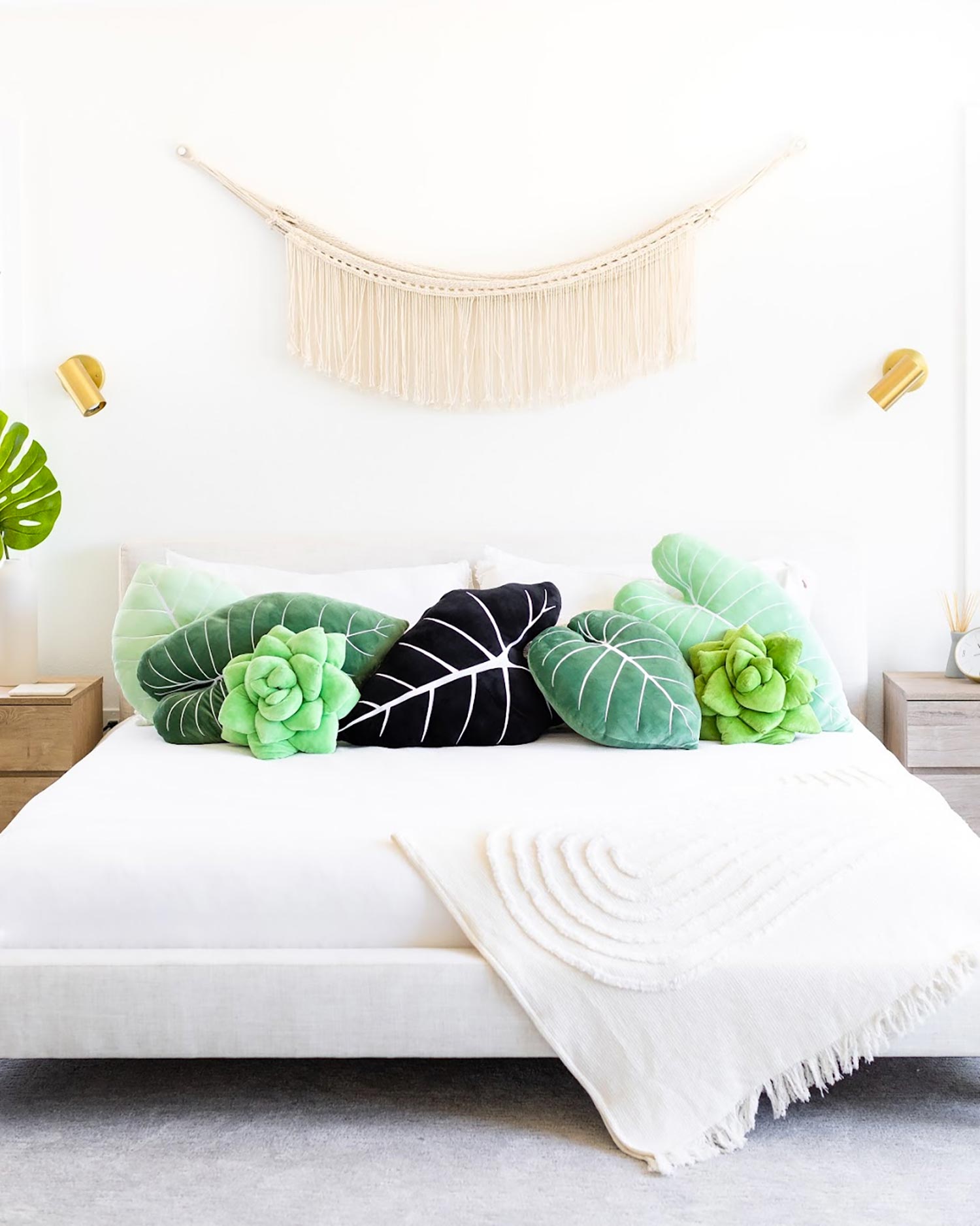
While biophilic design is all about invoking nature inside your home, that doesn’t only apply to living things. Another biophilic trend is using fabrics, pillows, and even sofas that look like plants. This decor method is perfect for people who move or travel too often to keep houseplants alive. These succulent and plant pillows from Green Philosophy Co. give any bedroom an instant biophilic makeover.
“Plants are an amazing way to liven up any space. But when I was moving between cities and across states, I couldn’t always bring my live plants with me,” says Lillian Lau, the company’s founder. “The idea of plant pillows sprouted from my desire to come home to a space that is cozy and relaxing, especially when my collection of plants couldn’t be there."
4. Liven Up the Corners
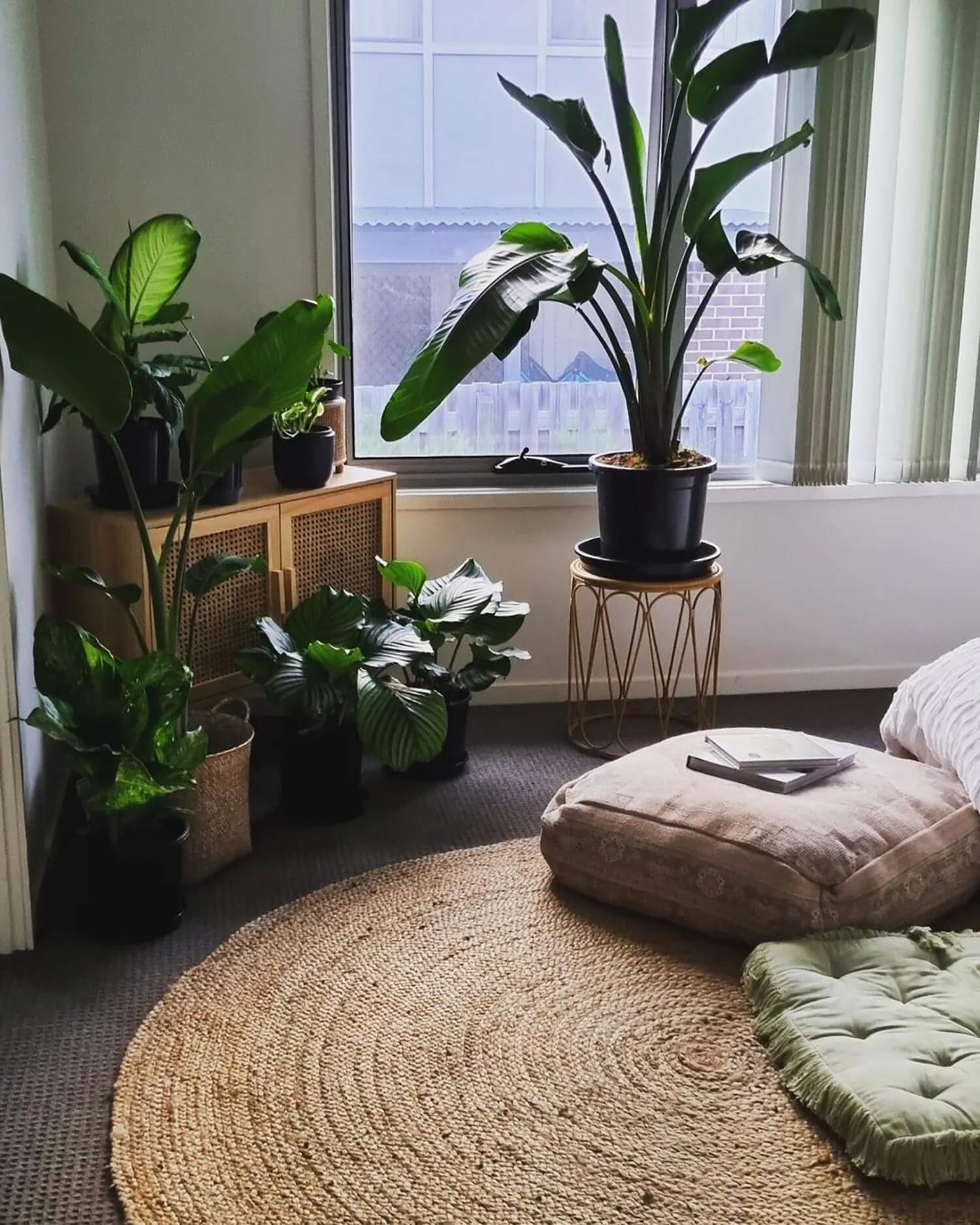
If your bedroom is tight on space, there are several ways to incorporate biophilic design without overwhelming the room. Using hanging planters helps keep floor space open, and using a simple grass or sisal rug is an affordable way to add natural fibers. Save space by using corners for plant storage, like this bedroom from Designed by Plants. Plus, grouping your plants together creates visual interest while taking advantage of the light.
5. Use Inventive Lighting
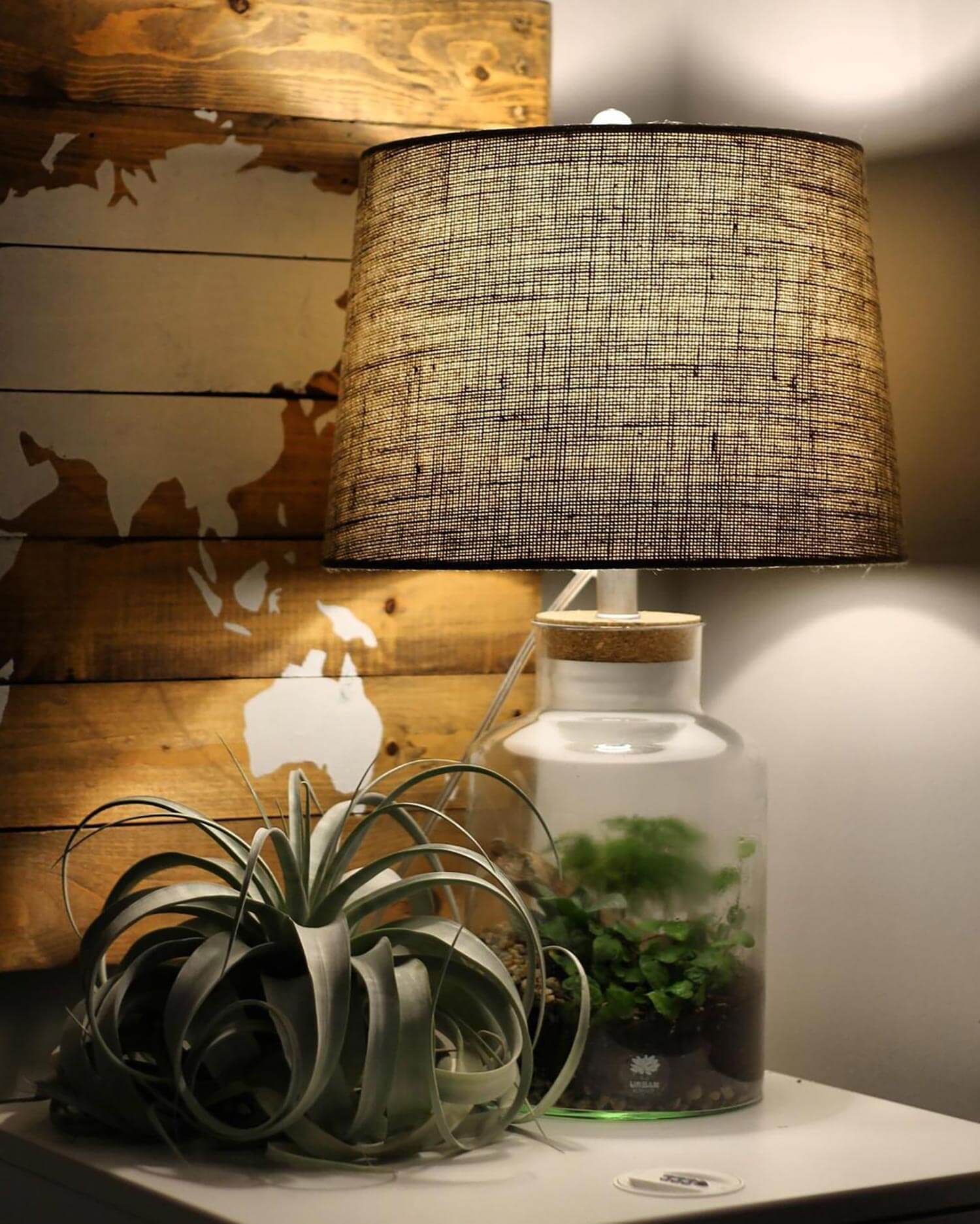
Mood lighting is one of the tenets of biophilic design, and one of the most important places to have restorative lighting is your bedroom. Creating a restful, calming bedroom is one of the many benefits of adding biophilic elements to your home. Start by installing a dimmer switch for your overhead lights so you can easily adjust them to fit your mood. Another idea is to add a bedside lamp with an organic element or a Himalayan sea salt lamp to your nightstand.
A terrarium lamp is next-level biophilic lighting. Created by The Urban Botanist, these terrariums are self-sustaining in their mini biosphere.
6. Paint the Walls Green
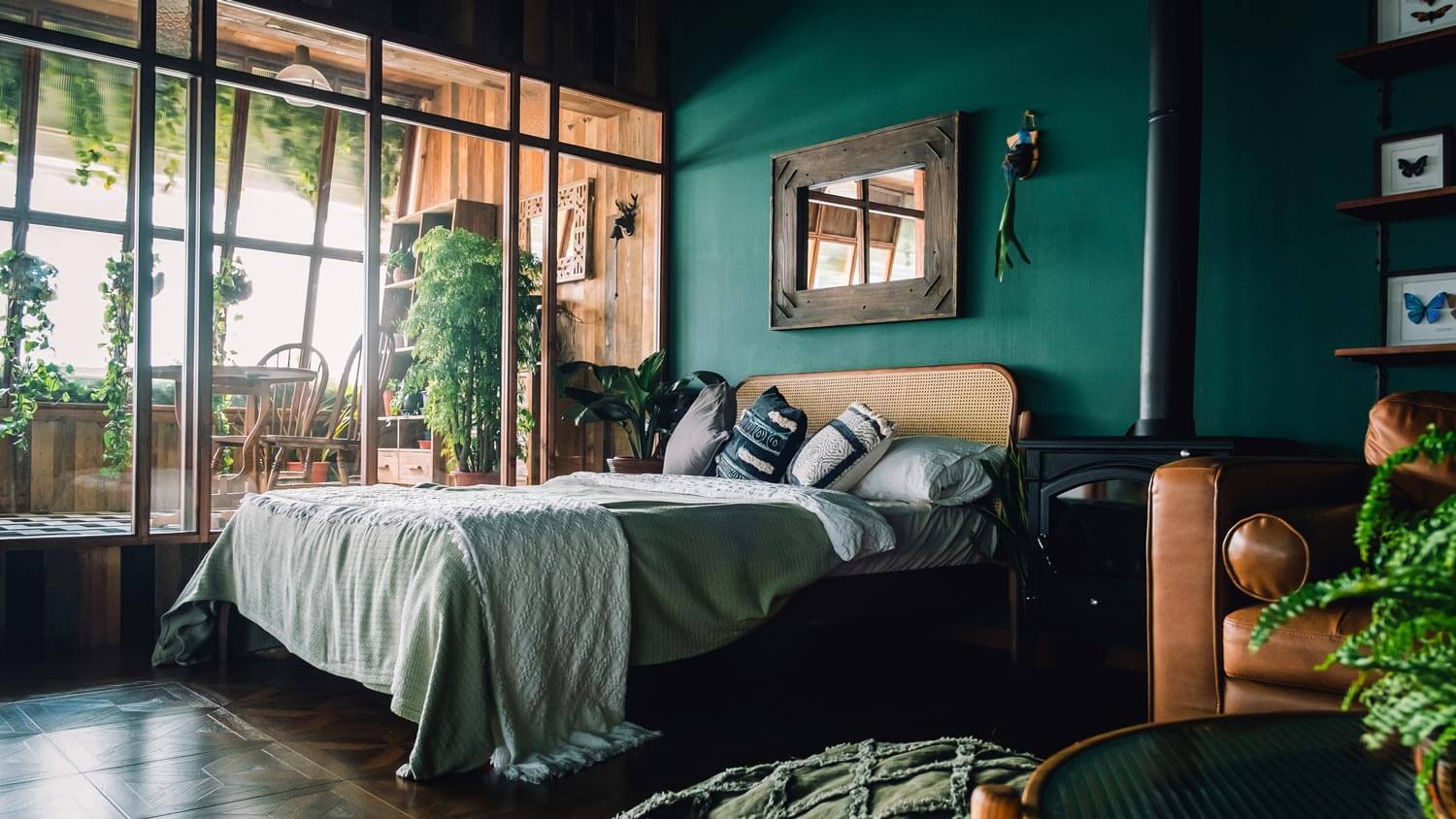
Painting a deep green or emerald accent wall in your bedroom is an affordable way to change the atmosphere in your room. Choose a shade of green that complements the other colors and textures in your room, and highlight the bold color with a hanging or potted plant to tie the room together.
7. Add a Pop of Orange
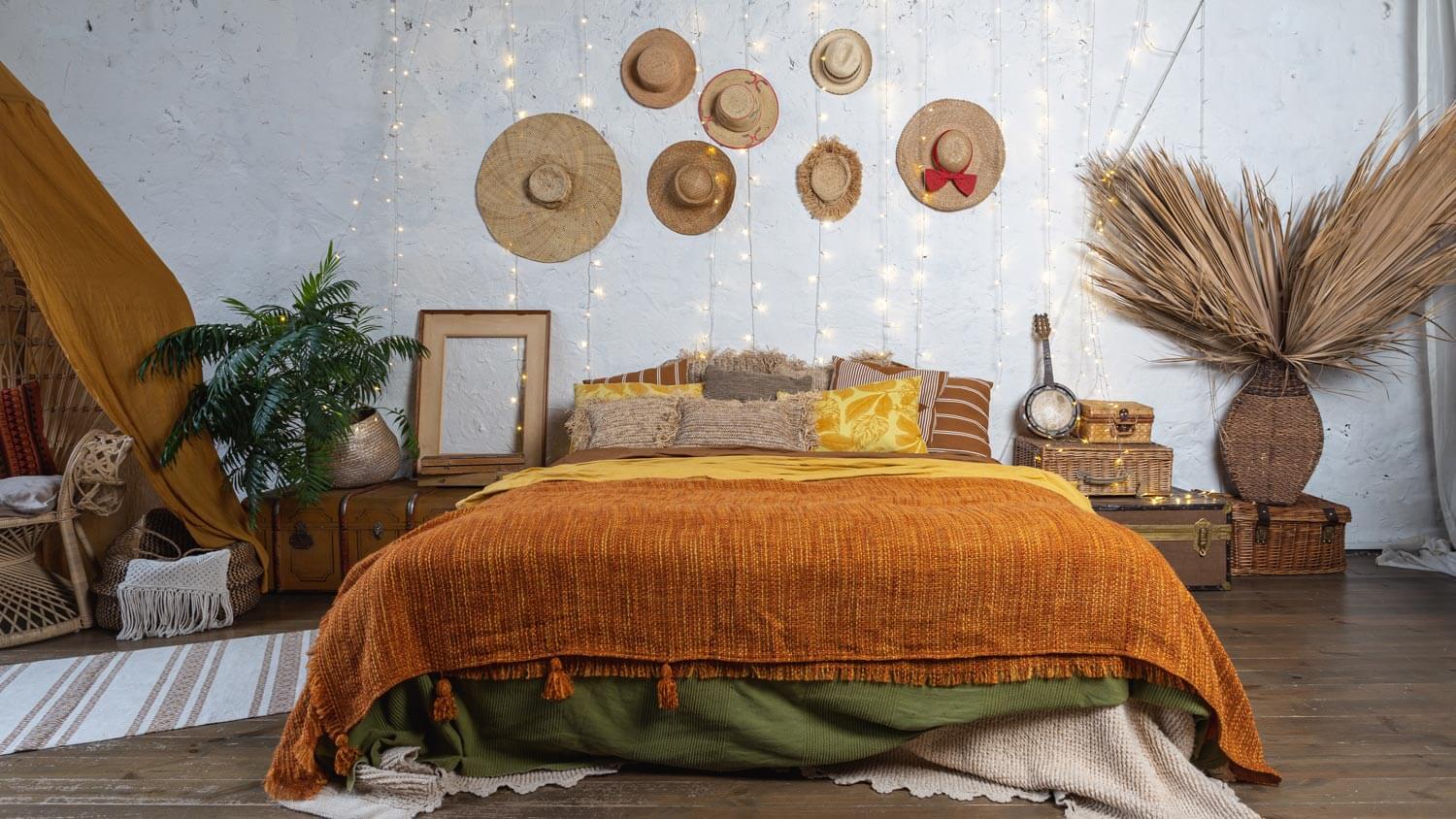
When most people imagine a botanical bedroom, they think of shades of green and soft browns. But biophilic design takes advantage of the vast rainbow of colors that occur in nature, such as warm shades of orange. Sunset-inspired oranges and golds look luxurious when paired with baskets and dried plants, creating a relaxing but chic bedroom aesthetic.
8. Make the Plants the Focal Point

Another approach to biophilic bedroom design is a more minimalist look where plants take center stage. Using light colors and sparse decor immediately draws the eye to the outlines and textures of the plants. You can also use botanical artwork to connect the inanimate decor to the living things in the room.
9. Recycle and Reuse Decor Pieces
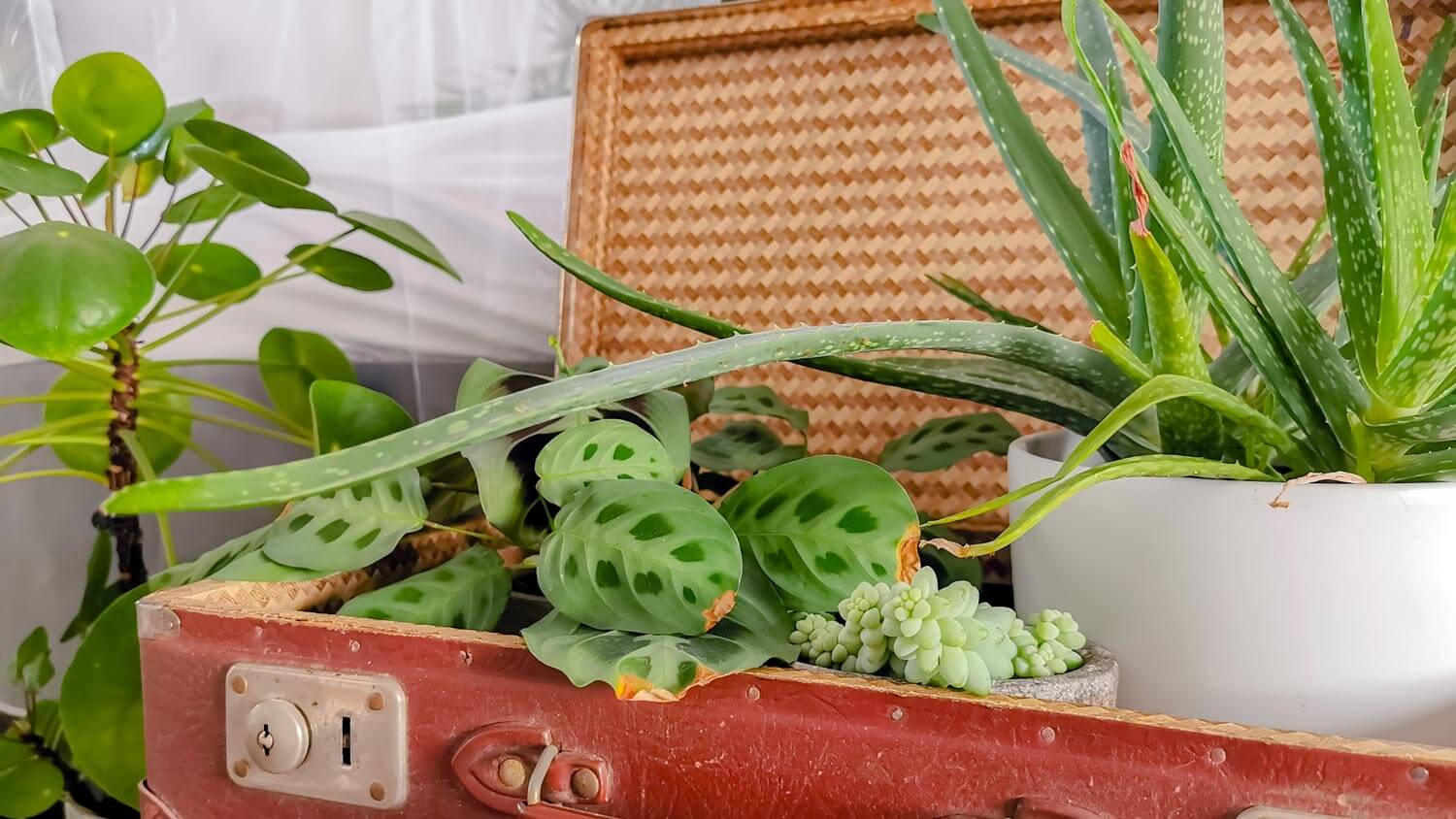
Sustainability and preserving the natural environment are cornerstones of biophilic design.
That’s why responsibly harvested materials and renewable flooring options, like bamboo, are frequently incorporated into biophilic design plans. Find unique ways to outfit your bedroom with repurposed items, such as transforming a vintage suitcase into a one-of-a-kind plant stand.
10. Add Some Oceanic Elements
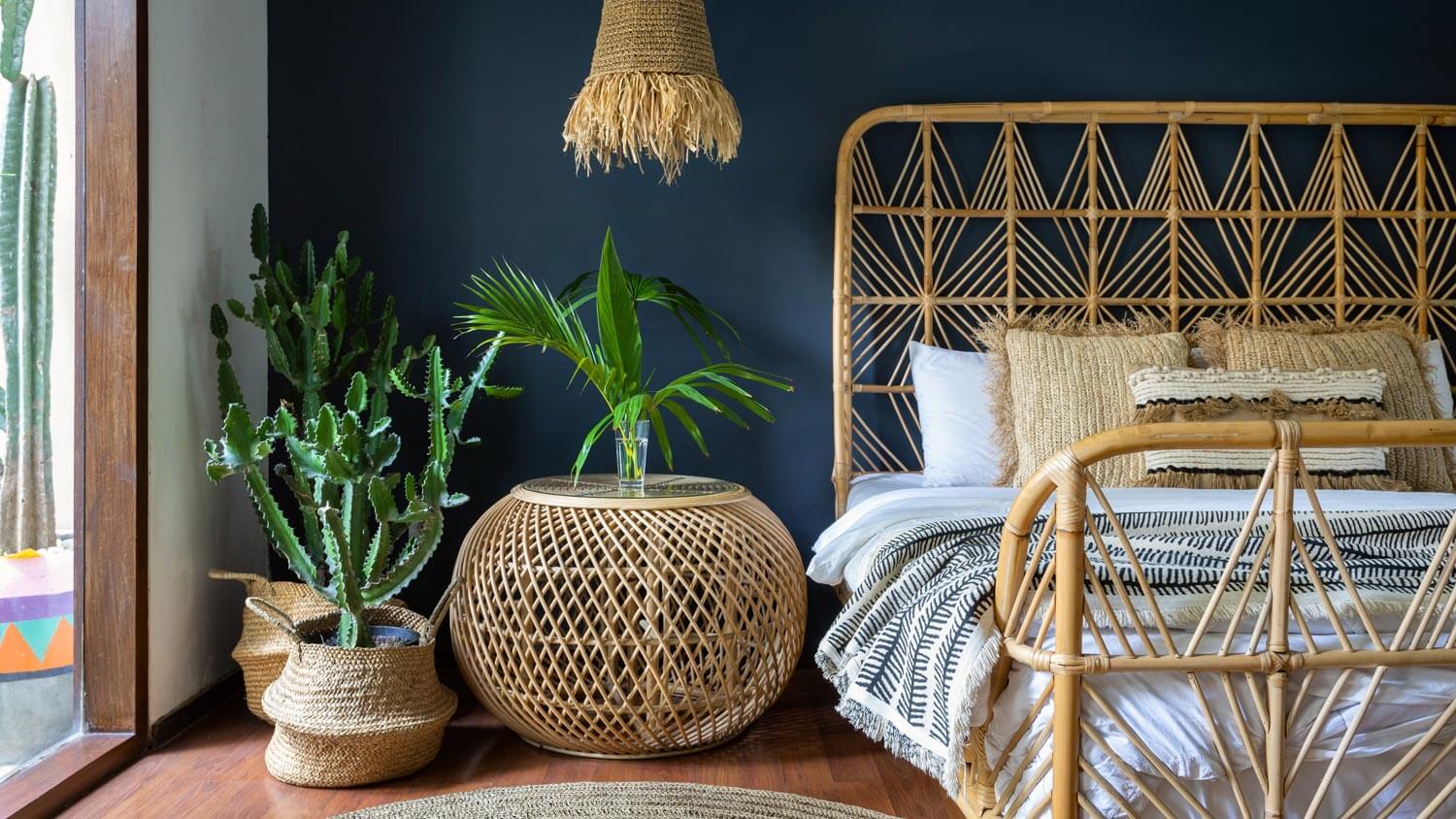
Water is an essential part of life, and as such, it’s a critical element in biophilic design. However, that doesn’t mean you need a waterfall outside your window to incorporate ocean-inspired elements into your bedroom space.
Paint an accent wall a shade of blue to conjure up images of a deep blue sea or a peaceful river. Or use rattan furniture and basketry or other beach-inspired design aesthetics and materials to give your room a distinct tropical paradise feeling.
11. Connect to the Sounds of Nature
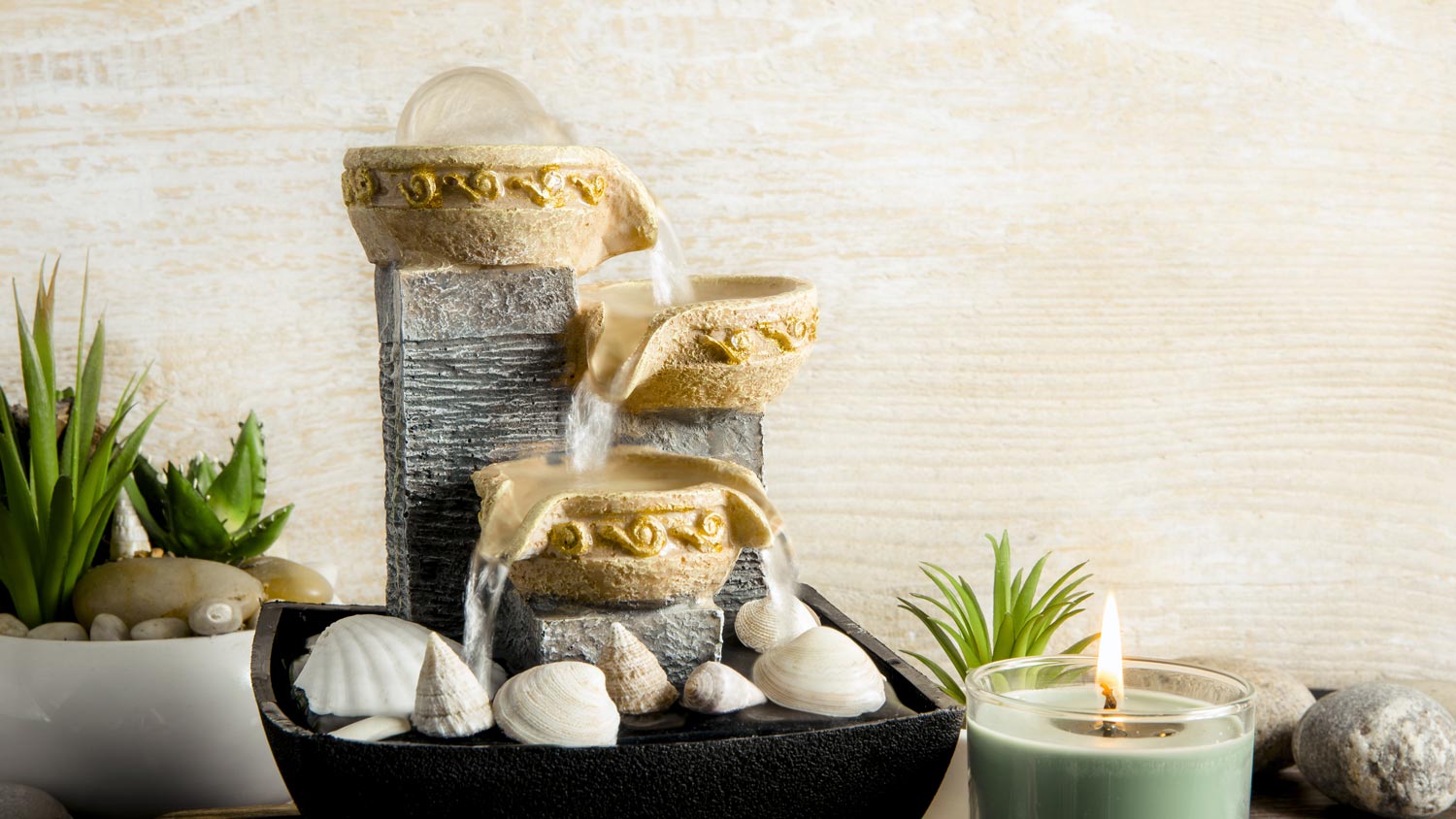
Do you love listening to the sound of a rushing stream while you sleep? Trade your white noise machine for a moving water foundation, and place it on top of your dresser or your nightstand. The humidity created by the fountain will help any nearby plants, and the sound of a babbling brook will lull you to sleep.
12. Create a Cave-Like Atmosphere
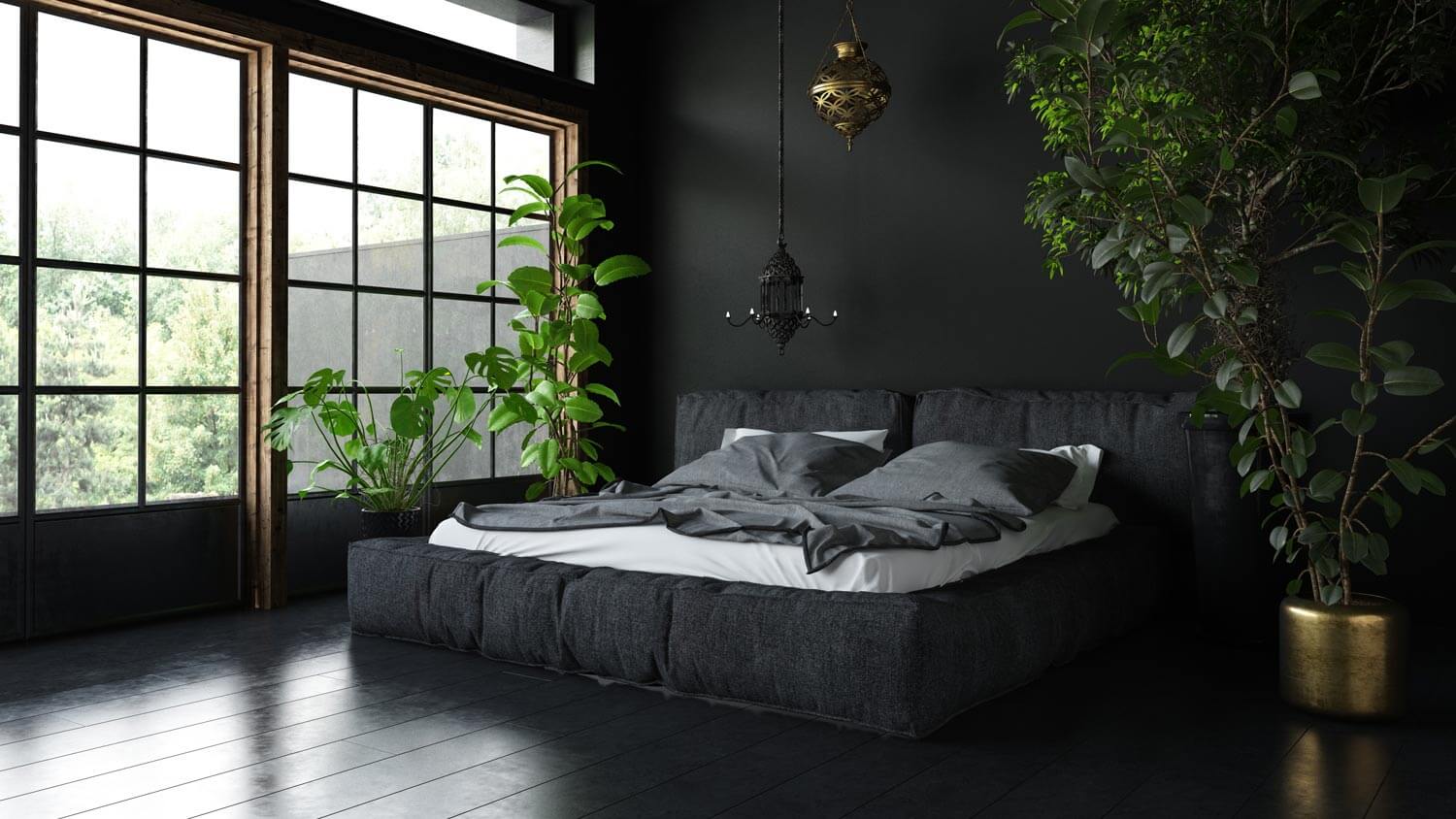
While it’s common to see light, airy designs in biophilic bedrooms, creating a dark, cave-like bedroom embraces another essential biophilic design aspect. If you prefer dark-toned bedrooms, you can mirror caverns and caves by creating a space filled with shades of grey, dark brown, and black. To add pockets of brightness, add green plants that pop against the deep-colored walls and the dark floors to complete the cave-like atmosphere.
13. Incorporate Moss Art
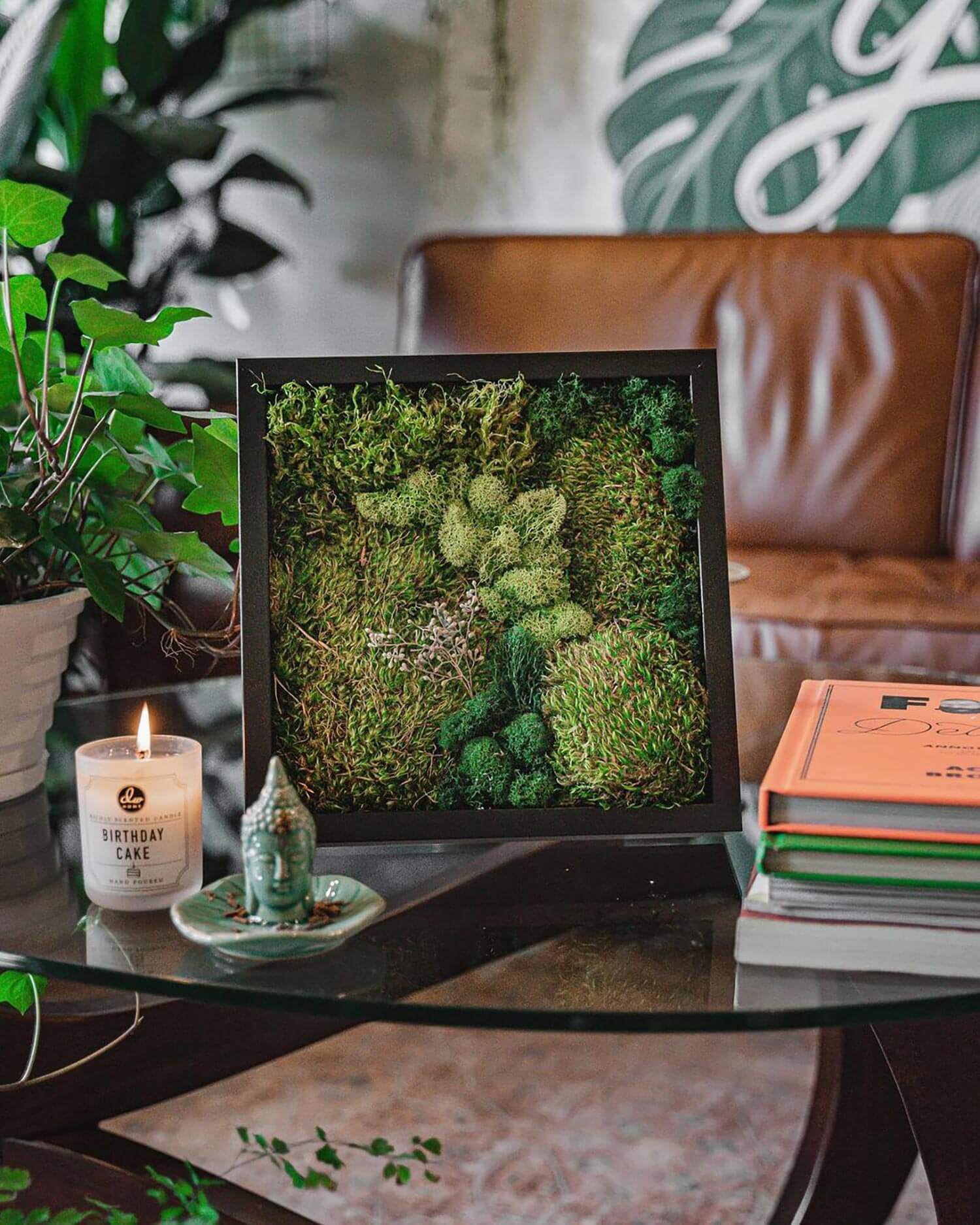
Framed moss wall art is all the rage when it comes to biophilic design, and it’s one of the easiest ways to add this trendy concept to your bedroom. Since moss is a low-maintenance plant, you can use it as forest-floor decor without worrying about maintaining a watering schedule.




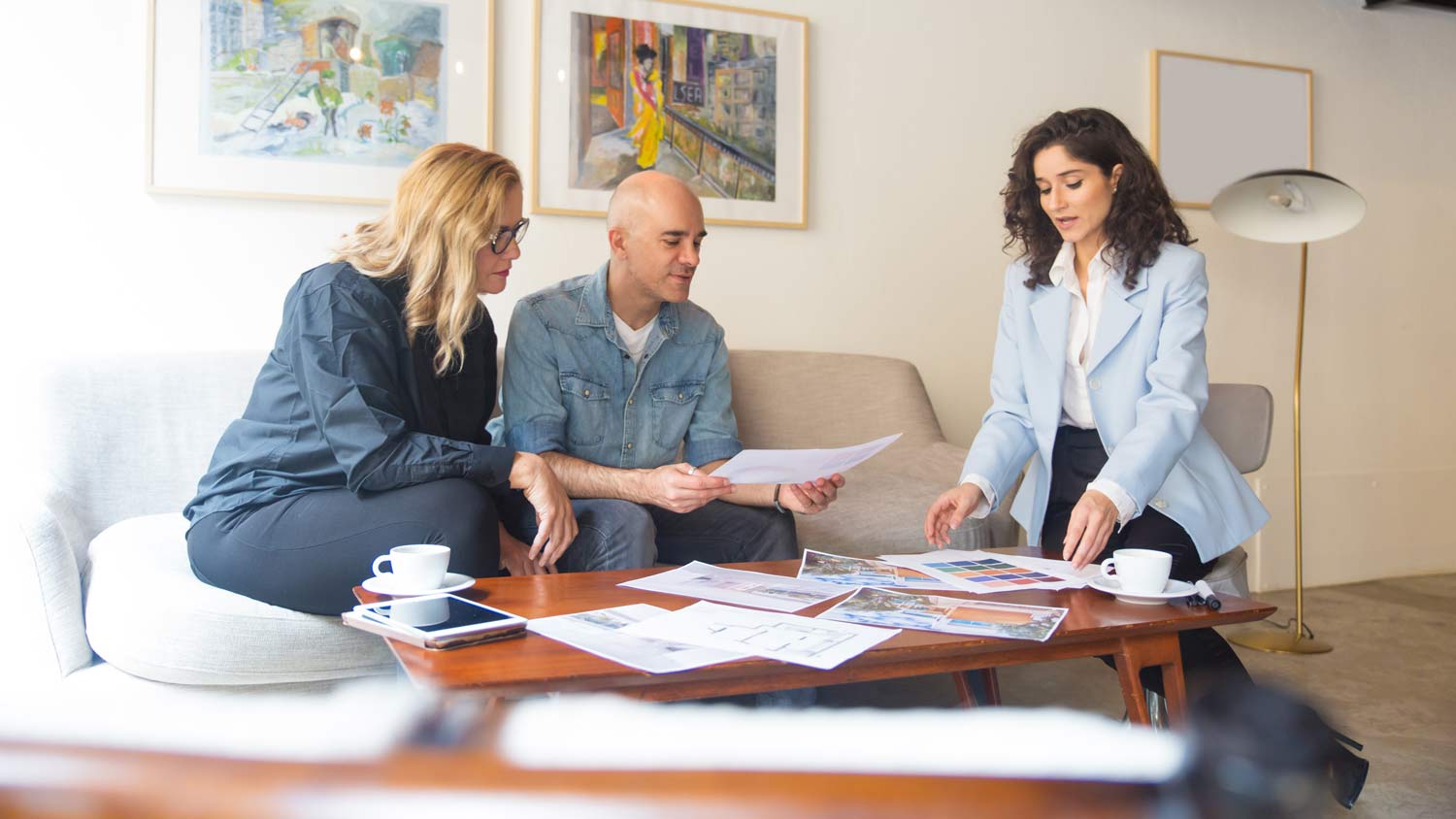
- The Definitive Guide to Biophilic Design
- 12 Biophilic Home Office Designs to Boost Your Creativity
- 11 Biophilic Bathroom Ideas to Create an Indoor Oasis
- All of the Home Trends We Expect to See Everywhere in 2022
- 30 Bedroom Decor Ideas to Showcase Your Personal Style
- Best Bedroom Paint Colors and How to Choose One
- 16 Modern Bedroom Ideas for a Cozy and Chic Sanctuary
- 10 Tips That’ll Help You Create a Relaxing Bedroom Environment
- How to Create the Ultimate Bedroom Retreat
- Go Green: The Best Plants for Every Room in Your Home















